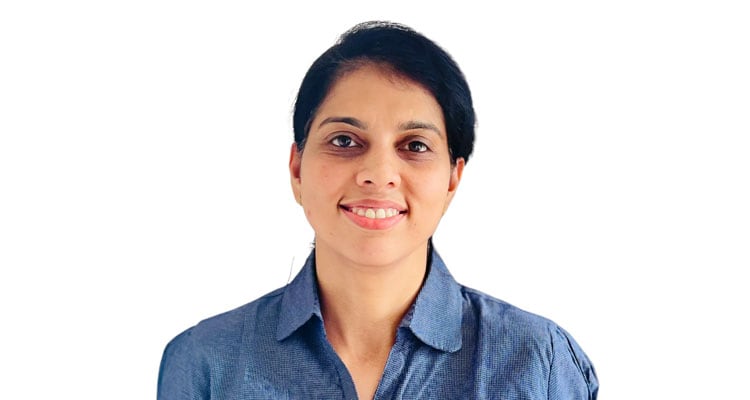The diagnostic odyssey in India: Can early genomic testing bring it to an end?
Dr Aparna Ganapathy explains how early use of genomic sequencing could reduce diagnostic delays, improve care pathways, and lower healthcare costs for rare disease patients in India
The term “diagnostic odyssey” describes the long, often exhausting journey that patients—particularly those with rare and complex genetic conditions—go through in pursuit of a clear diagnosis. For many families, especially in India, this isn’t just medical terminology—it’s a deeply lived experience.
What do patients face in a Diagnostic Odyssey?
Patients caught in a diagnostic odyssey often face:
- Prolonged timelines: It can take years from the onset of symptoms to an accurate diagnosis.
- Multiple tests and referrals: Children may undergo a battery of inconclusive tests, misdiagnoses, and repeated referrals to specialists.
- Emotional and financial burden: These delays come with not just emotional tolls, but also significant out-of-pocket expenses—especially in systems where specialised testing isn’t easily accessible.
- Missed treatment opportunity in rare genetic diseases: Many rare genetic conditions present early, with nonspecific symptoms like developmental delay, seizures, or growth failure—making diagnosis and treatment even harder without genetic insights.
The Indian reality: A longer, costlier journey. India is home to an estimated 70 million individuals affected by rare genetic diseases. However, due to limited awareness, access, and infrastructure, the diagnostic timeline in India is often even longer than the global average.
- In Europe, the diagnostic odyssey averages 5 years.
- In the U.S., it is close to 7 years.
- In India, the journey can be even more prolonged due to delayed referrals, lower access to genomics, and uneven distribution of specialist centers.
For children with unexplained neurological symptoms, metabolic disorders, or developmental delays, this means years of uncertainty—during which critical windows for intervention and therapy may be missed.
Why should genomic sequencing come first?
Nearly 80 per cent of all rare diseases have a genetic cause. Traditionally, diagnosing rare genetic conditions in India involves blood tests, metabolic panels, neuroimaging, karyotyping, and sometimes single-gene tests. This piecemeal approach often leads to diagnostic delays, unnecessary interventions, and rising costs for families already under emotional strain.
Genomic sequencing: A transformational shift
In contrast, genomic sequencing (especially whole-exome or genome sequencing) can detect a wide range of variants—point mutations, insertions/deletions, and structural changes—in a single test. Instead of starting with multiple, narrowly focused investigations, genomic sequencing provides a comprehensive view upfront, often shortening the diagnostic timeline significantly. There is a growing consensus in the medical genetics community that comprehensive genomic testing early in the diagnostic process can significantly improve clinical outcomes. By reducing time to diagnosis, enabling targeted interventions, and avoiding unnecessary procedures, genomic sequencing offers clear advantages over traditional approaches.
Whole exome sequencing (WES) and whole genome sequencing (WGS) are increasingly being explored—and in many settings, adopted—as first-tier diagnostic tools, particularly for children with unexplained developmental delays, congenital anomalies, or suspected genetic disorders. These approaches offer 2–3 times higher diagnostic yields compared to conventional methods such as targeted gene panels and chromosomal microarrays, making them a more efficient and effective choice in the search for accurate diagnoses.
Early diagnosis = tangible benefits
A genetic diagnosis doesn’t just offer a name for a condition, it opens doors. In many cases, it offers avenues for targeted treatment such as enzyme replacement or dietary interventions and helps in avoiding unnecessary and possibly risky treatments. In 33 per cent – 94 per cent of patients, it also led to meaningful changes in therapy and management. It can also have other clinical benefits by encouraging screening/preventive testing for at-risk family members and allowing couples to make informed reproductive decisions.
In India, where diagnostic uncertainty can lead to years of travel, repeated hospital visits, and financial exhaustion, these benefits are even more impactful.
While genomic testing may appear expensive initially, early diagnoses could reduce long-term healthcare costs.
Time to flip the diagnostic model
In India, clinical-grade genomic testing has historically been limited to urban centers. But that landscape is changing. Laboratories such as Strand Life Sciences are now making affordable, pan-India access to WES and WGS a reality—paired with genetic counseling to ensure clinical utility. Simultaneously, national initiatives like the GenomeIndia Project are working to build population-specific genomic databases—critical for interpreting variants that are underrepresented in global datasets.
India stands at a pivotal moment in its healthcare evolution. The rising burden of rare diseases, a growing pediatric population, and increasing accessibility to advanced diagnostic technologies underscore the urgent need—and opportunity—to reshape our diagnostic model using genomics.
However, key implementation hurdles remain:
- Low awareness of WES/WGS among frontline clinicians
- Lack of insurance coverage for first-tier genomic testing
- Limited integration of genomics into national rare disease programs
Despite these challenges, the momentum is undeniable. Sequencing costs are falling, regulatory frameworks are evolving, and India-specific innovations are emerging. Genomic sequencing is rapidly becoming a cornerstone of rare disease diagnostics. We must move toward a future where:
- Genomic testing comes first—not last
- Diagnosis is proactive, not reactive
- Precision replaces trial-and-error medicine
For Indian families, this shift promises something transformational: fewer years of uncertainty, earlier access to answers, and more timely interventions. Traditional, stepwise diagnostic pathways—built around fragmented referrals and outdated testing protocols—are no longer sustainable. They delay diagnoses, inflate healthcare costs, and contribute to missed treatment windows, especially in resource-constrained settings.
- Advertisement -


